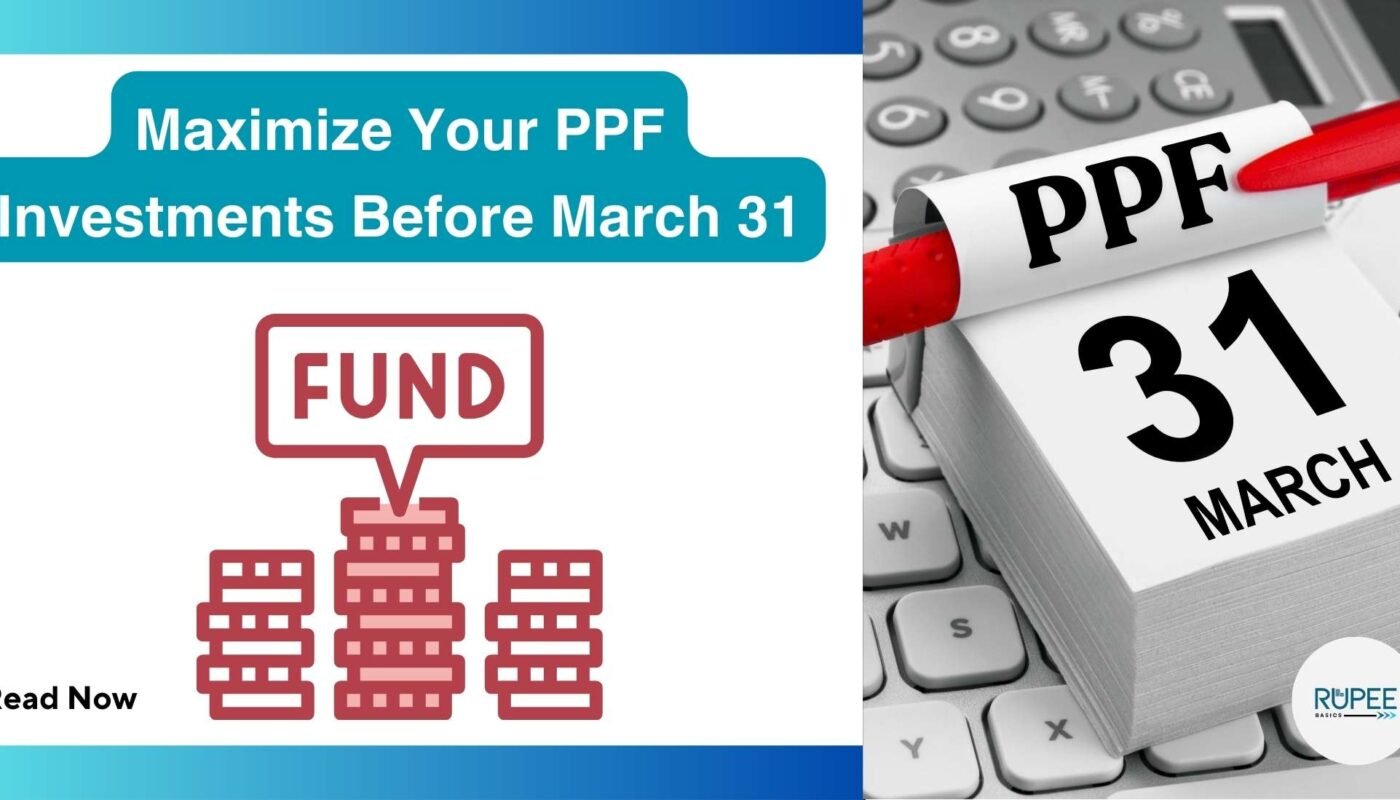Maximize Your Tax Savings: Last-Minute PPF Investment Strategies Before FY Ends
As the financial year (FY) concludes, strategic tax planning becomes urgent. The Public Provident Fund (PPF) remains a cornerstone for risk-averse investors seeking tax efficiency and steady growth. This guide dives into optimizing PPF contributions before March 31, leveraging Section 80C benefits, and comparing PPF with ELSS for a balanced portfolio.
Why PPF? Safety, Tax Efficiency, and Growth
Government-Backed Security: PPF is a sovereign-backed scheme, ensuring zero default risk—ideal for conservative investors.
Tax Efficiency:
- EEE Benefits: Contributions (up to ₹1.5L/year), interest earned, and maturity proceeds are fully tax-exempt.
- Effective Returns: At 7.1% p.a., the post-tax return equals ~10.1% for those in the 30% tax slab (vs. taxable FDs).
Historical Context:
- PPF rates are revised quarterly but have remained stable (7–8% over the last decade), outpacing average inflation (5–6%).
- Example: A ₹1.5L annual investment for 15 years grows to ~₹40.7L tax-free, offering a real return of ~2–3% post-inflation.
Flexibility: Extend the account indefinitely in 5-year blocks post-maturity, continuing tax-free growth.
Last-Minute PPF Deposit: A Step-by-Step Guide
Deadline Alert: Deposits must be processed by March 31. Delays risk losing FY 2023–24 tax benefits.
1. Online Deposits (Instant & Secure)
- Net Banking: Log in → Navigate to Investments/PPF → Enter amount (max ₹1.5L/year).
- UPI/Apps: Use BHIM, GPay, or bank-specific apps (e.g., SBI Yono, iMobile) for instant transfers.
- Pro Tip: Avoid March 30–31 due to server overloads; aim for March 28–29.
2. Offline Deposits
- Bank/Post Office: Submit a cheque or cash with Form 2 and your PPF passbook.
- Documentation: Carry PAN, ID proof, and passbook. Cheques take 1–2 days to clear.
3. Post-Deposit Steps
- Confirm Credited Date: Ensure the transaction reflects as “March 2024” in your passbook.
- Troubleshooting: If issues arise, email your bank with payment proof for resolution.
Maximize PPF Interest: Timing & Compounding
- Monthly Cut-off: Deposits before the 5th earn interest for the entire month.
- Example: ₹1.5L deposited on April 4 earns ₹8,875 annual interest (7.1% on ₹1.5L). The same deposit on April 6 earns ₹8,135 (11 months’ interest).
- Annual Compounding: Interest is calculated monthly but credited on March 31. Use online PPF calculators to project returns.
PPF vs. ELSS: A Strategic Comparison
| Factor | PPF | ELSS |
|---|---|---|
| Returns | Fixed (7.1%) | Market-linked (10–15% avg. historical) |
| Risk | Zero (Govt.-backed) | High (Equity volatility) |
| Lock-in | 15 years (partial withdrawal after 7 yrs) | 3 years |
| Tax on Exit | Fully exempt | 10% LTCG tax over ₹1 lakh |
| Liquidity | Low (long-term horizon) | Moderate (post 3 years) |
| Best For | Retirement, child’s education | Wealth creation, shorter goals |
Hybrid Strategy: Allocate 60–70% to PPF for safety and 30–40% to ELSS for growth.
Avoid These PPF Mistakes
- Overinvestment: Contributions beyond ₹1.5L/year earn 0% interest and are ineligible for tax deductions.
- Inactive Accounts: Reactivate by paying ₹50/year + minimum ₹500 deposit. Partial withdrawals blocked until reactivation.
- Ignoring Nominations: Update nominees via Form E to avoid legal hassles for heirs.
- Premature Closure: Allowed only for critical needs (medical emergencies, higher education) with penalties.
FAQs: Clarifying Doubts
- Can NRIs Invest?
- Existing PPF accounts can continue until maturity, but NRIs cannot open new accounts.
2. Loan Against PPF
- Available from the 3rd to 6th year (max 25% of balance). Interest: 2% above PPF rate.
3. PPF for Minors
- Guardians can open accounts, but the ₹1.5L limit applies across all accounts (parent + child).
4. Impact on Loans/Credit Score
- PPF savings demonstrate financial discipline, indirectly boosting loan eligibility.
Beyond March 31: Year-Round PPF Planning
- Auto-Debit Setup: Schedule monthly contributions via ECS to avoid year-end rush.
- Portfolio Diversification: Pair PPF with NPS (additional ₹50K tax deduction) and health insurance (Section 80D).
- Digital Tools: Use apps like Cube Wealth or ETMoney to track PPF, ELSS, and other investments.
Case Study: Balancing Safety & Growth
Rahul (Age 30): Invests ₹1L in PPF and ₹50K in ELSS annually.
- PPF: At 7.1%, accumulates ₹34.8L by 45 (tax-free).
- ELSS: At 12% CAGR, grows to ₹18L (post-tax).
Combined corpus: ₹52.8L, balancing safety and market-linked growth.
Psychological Benefits of PPF
- Peace of Mind: Sovereign guarantee reduces anxiety during market crashes.
- Forced Savings: Lock-in period instills long-term financial discipline.
Don’t let the FY slip away! Invest ₹1.5L in PPF today and slash your tax bill. 📊 Share this guide to empower others with smart tax choices!
“Your time is limited, so don’t waste it living someone else’s life.” – Steve Jobs




